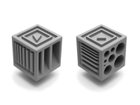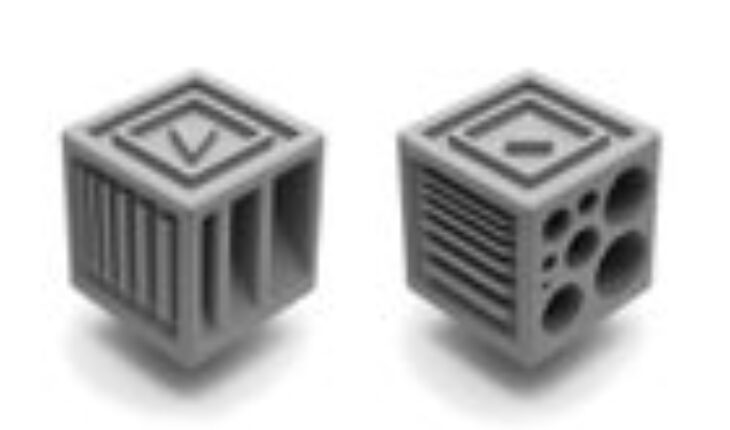
|
For the last couple of weeks I’ve been experimenting with different types of tests to improve my scanning results. About a week ago I thought that hey; there must be some kind of general 3D-printable test object for this available online to download, 3D-print and test with, just like there’s almost a billion when it comes to testing settings for 3D-printing. I was unable to find even a single one when searching with search engines as well as directly on the 3D-printing sites, so.. I guess there aren’t any? or at least not that’s easy to find? I still wanted a good test object for testing different settings as well as practicing using my scanners to improve my scanning results as much as possible, so I started creating my own. The main idea is to use it to evaluate your own settings used while scanning, like different types of tracking modes and size mode while scanning, laser brightness and ir exposure settings, how to hold and angle the scanner during scanning, how-post process settings affect different kinds of features with the scanners. It will also be useful to evaluate how stable the scanning rigs and the whole scanning setup when changing things around, as then there is sort of a base object to draw conclusion from. So, I ended up creating the Scan-Cube, a 403 mm cube with different sized features in different orientations that simulates a kind of engineering type object. The features on the scan-cube will help to show the total combination of 3D-scanner hardware performance, software performance and user performance. As user experience play a huge role in the total performance when using a 3D-scanner, this object is not meant to be used for different individuals to compare different scanners, but it can be used by the same individual to compare the performance of different scanners owned. With the two scanners I currently own, CR-Scan Otter and Ferret, I can clearly notice a big difference in how to use the two scanners in order to be able to capture the surfaces and how they track the object in the different modes. Please note that the scan result I share here of the CR-Scan Otter and Ferret are with the experience I have at this very moment with each scanner. The Otter I’ve had for several months but the Ferret only for a few days worth of scanning, so Ferret’s result can likely be improved more. I share it here in case there are anyone else think that it may be an useful object to test and practice with. https://makerworld.com/en/collections/5142492 … Now there exist at least one such test/practice object. submitted by /u/Pawpawpaw85 |




